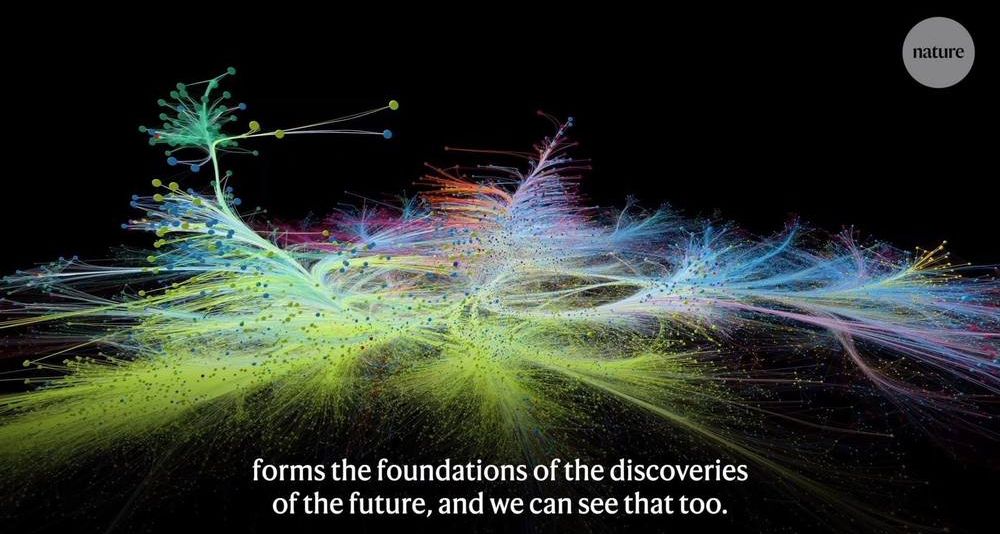Page 8133
Nov 12, 2019
Physics experiment with ultrafast laser pulses produces a previously unseen phase of matter
Posted by Saúl Morales Rodriguéz in categories: energy, physics
Adding energy to any material, such as by heating it, almost always makes its structure less orderly. Ice, for example, with its crystalline structure, melts to become liquid water, with no order at all.
But in new experiments by physicists at MIT and elsewhere, the opposite happens: When a pattern called a charge density wave in a certain material is hit with a fast laser pulse, a whole new charge density wave is created—a highly ordered state, instead of the expected disorder. The surprising finding could help to reveal unseen properties in materials of all kinds.
The discovery is being reported today in the journal Nature Physics, in a paper by MIT professors Nuh Gedik and Pablo Jarillo-Herrero, postdoc Anshul Kogar, graduate student Alfred Zong, and 17 others at MIT, Harvard University, SLAC National Accelerator Laboratory, Stanford University, and Argonne National Laboratory.
Nov 12, 2019
NASA Scientists Detect Huge Thermonuclear Blast Deep in Space
Posted by Quinn Sena in category: cosmology

NASA recently detected a massive thermonuclear explosion coming from outer space.
The culprit seems to be a distant pulsar, the space agency reports, which is the stellar remains of a star that blew up in a supernova but was too small to form a black hole. NASA spotted the burst because it sent out an intense beam of x-rays that got picked up by the agency’s orbital observatory NICER.
Continue reading “NASA Scientists Detect Huge Thermonuclear Blast Deep in Space” »
Nov 12, 2019
Breakthrough as scientists create a new cowpox-style virus that can kill EVERY type of cancer
Posted by Fyodor Rouge in categories: biotech/medical, engineering
Scientists have created a new cowpox-style virus in a bid to cure cancer.
The treatment, called CF33, can kill every type of cancer in a petrie dish and has shrunk tumours in mice, The Daily Telegraph reported.
US cancer expert Professor Yuman Fong is engineering the treatment, which is being developed by Australia biotech company Imugene.
Nov 12, 2019
DDoS Attacks Target Amazon, SoftLayer and Telecom Infrastructure
Posted by Quinn Sena in category: futurism
The specific type of TCP attack used in the recent spate of DDoS efforts were TCP SYN-ACK reflection attacks.
Nov 12, 2019
NSW and QLD bushfires: ‘Catastrophic’ fire danger forecast for today
Posted by Quinn Sena in category: futurism
“The catastrophic weather conditions mean that things can change very quickly,” she told reporters in Sydney.
Catastrophic fire danger has been declared for Sydney and the Hunter Valley region to the north today with severe and extreme danger across vast tracts of the rest of the state.
The week-long declaration of a state of emergency gives the Rural Fire Service sweeping powers.

This week’s cover shows Nature’s publication record over 150 years. Explore the growing web of collaboration and science in an interactive graphic here: https://go.nature.com/32wf2SB
Nov 12, 2019
Assembling Large Frames in Space For Massive Mars Colonization Ship
Posted by Klaus Baldauf in category: space travel

https://youtube.com/watch?v=VKEY8ZKIw2E
Gateway Foundation is working on creating orbital assembly line and block construction systems. They would want to create a 244 meter long and 71 meter wide Mars Colonial Transport.

Nov 12, 2019
Specific neurons that map memories now identified in the human brain
Posted by Paul Battista in categories: biotech/medical, engineering, neuroscience, virtual reality
An important aspect of human memory is our ability to conjure specific moments from the vast array of experiences that have occurred in any given setting. For example, if asked to recommend a tourist itinerary for a city you have visited many times, your brain somehow enables you to selectively recall and distinguish specific memories from your different trips to provide an answer.
Studies have shown that declarative memory—the kind of memory you can consciously recall like your home address or your mother’s name—relies on healthy medial temporal lobe structures in the brain, including the hippocampus and entorhinal cortex (EC). These regions are also important for spatial cognition, demonstrated by the Nobel-Prize-winning discovery of “place cells” and “grid cells” in these regions—neurons that activate to represent specific locations in the environment during navigation (akin to a GPS). However, it has not been clear if or how this “spatial map” in the brain relates to a person’s memory of events at those locations, and how neuronal activity in these regions enables us to target a particular memory for retrieval among related experiences.
A team led by neuroengineers at Columbia Engineering has found the first evidence that individual neurons in the human brain target specific memories during recall. They studied recordings in neurosurgical patients who had electrodes implanted in their brains and examined how the patients’ brain signals corresponded to their behavior while performing a virtual-reality (VR) object-location memory task. The researchers identified “memory-trace cells” whose activity was spatially tuned to the location where subjects remembered encountering specific objects. The study is published today in Nature Neuroscience.
Nov 11, 2019
SpaceX launch highlights threat to astronomy from ‘megaconstellations’
Posted by Derick Lee in categories: internet, satellites
Spaceflight company SpaceX is set to launch 60 communications satellites into orbit today as the basis for a web of spacecraft designed to provide global Internet access. But many astronomers worry that such ‘megaconstellations’ — which are also planned by other companies that could launch tens of thousands of satellites in the coming years — might interfere with crucial observations of the Universe. They fear that megaconstellations could disrupt radio frequencies used for astronomical observation, create bright streaks in the night sky and increase congestion in orbit, raising the risk of collisions.
Researchers fear that plans to send tens of thousands of communications satellites into orbit will disrupt scientific observations of the Universe.















